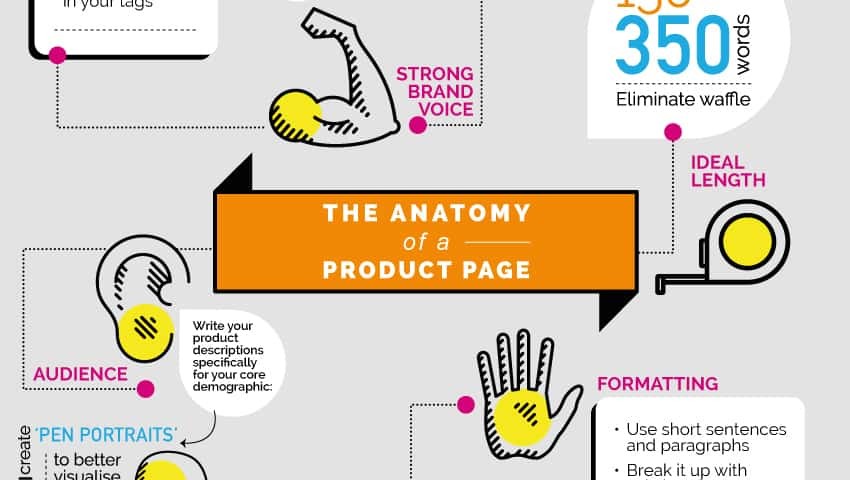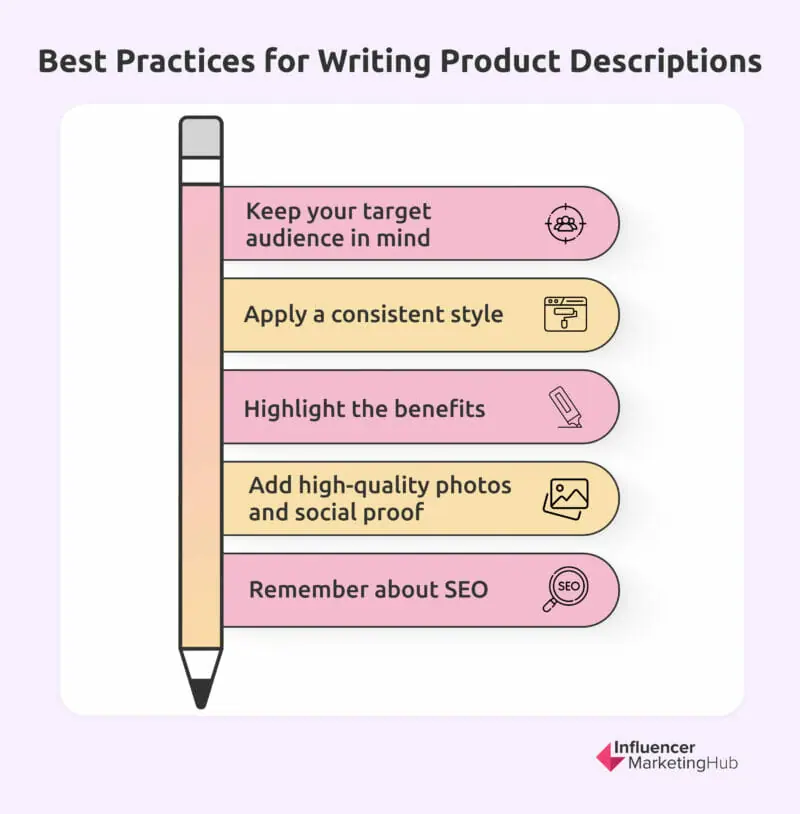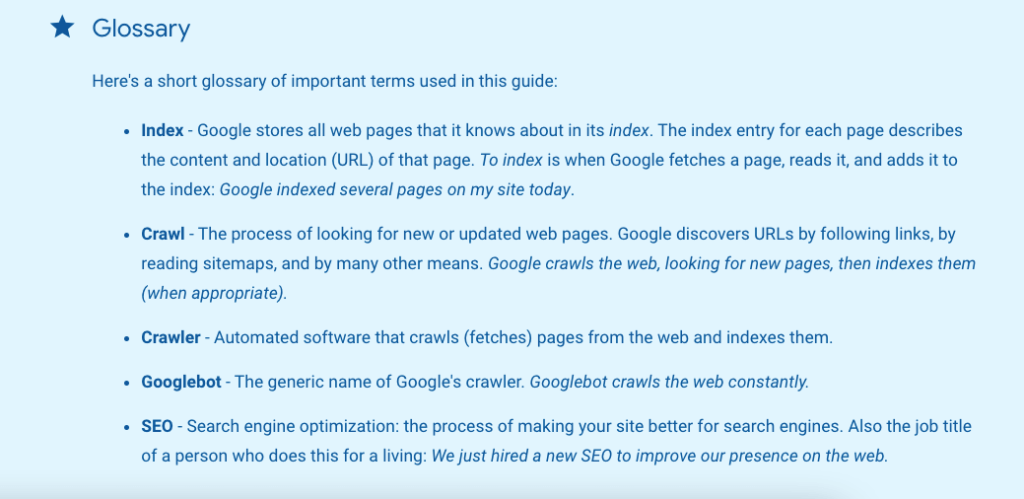Unlock the secrets to crafting irresistible product descriptions that not only sell, but also boost your SEO rankings effortlessly!

Image courtesy of via DALL-E 3
Table of Contents
- Introduction: The Magic of Product Descriptions
- Understanding Your Audience
- Keyword Research Made Easy
- Creating Compelling Descriptions
- Highlighting Product Benefits
- Adding Visual Elements
- Formatting for Readability
- Making Descriptions Mobile-Friendly
- Review and Edit Your Descriptions
- Conclusion: The Power of Perfect Product Descriptions
- Frequently Asked Questions (FAQs)
Introduction: The Magic of Product Descriptions
Have you ever wondered how you find the perfect item you’re looking for online? It’s all thanks to product descriptions! These little snippets of text are like magic spells that help you discover exactly what you need. But how does this magic work, you might ask? That’s where SEO comes in. By sprinkling in the right keywords, product descriptions become even more powerful, popping up in search results and guiding you to the best products out there.
Why Product Descriptions Matter
Picture this: You come across a cool gadget online, but you’re not quite sure what it does or how it works. That’s where a product description swoops in to save the day! These descriptions are like friendly guides that explain everything about the product, from its features to how it can make your life easier. They’re not just words on a screen – they’re persuasive tools that convince you to hit that “Add to Cart” button!
What’s SEO?
SEO might sound like a mysterious acronym, but it’s actually quite simple. SEO stands for Search Engine Optimization, which is just a fancy way of saying “making your stuff show up in search results.” Think of it as a secret code that, when used right, helps your product descriptions stand out in a sea of online options. By choosing the right words and phrases, you can cast a spell that brings your products right to the top when someone searches for them.
Understanding Your Audience
In order to write the perfect product description, it’s important to understand who will be reading it. Your audience, or customers, are the people you want to reach with your words. By knowing who they are and what they need, you can create descriptions that really speak to them and help them make informed decisions.
Know Who Your Customers Are
Before you start writing, take some time to research your customers. Find out their age, their interests, and what they are looking for in a product. Understanding these details will help you tailor your descriptions to meet their needs and preferences.
Speak Their Language
When writing your product descriptions, use simple language that your customers will understand. Avoid using complicated words or technical jargon that might confuse them. By speaking their language, you can make your descriptions clearer, more relatable, and more appealing.
Keyword Research Made Easy
In order to make your product descriptions more SEO-friendly and increase their visibility online, it’s important to use the right keywords. By incorporating popular search terms into your descriptions, you can help potential customers find your products more easily. Let’s dive into the world of keyword research and discover how you can find the best words to use in your product descriptions.

Image courtesy of via Google Images
What are Keywords?
Keywords are the words or phrases that people type into search engines when looking for products or information online. For example, if someone is searching for a new pair of sneakers, they might type in keywords like “best running shoes” or “affordable sneakers.” By including these keywords in your product descriptions, you increase the chances of your products showing up in search results.
Using Keyword Tools
One way to find the right keywords for your product descriptions is to use keyword research tools like Google Keyword Planner. These tools provide insights into popular search terms, their search volume, and competition level. By analyzing this data, you can identify keywords that are relevant to your products and have a high search volume, making them more likely to attract potential customers.
Creating Compelling Descriptions
When writing product descriptions, it’s essential to be clear and to the point. Too much information can overwhelm customers and make it harder for them to understand what the product is all about. Keep your descriptions concise by focusing on the most important details that will help customers make a purchasing decision.
Use Exciting Words
To make your product descriptions stand out, use exciting and engaging words that capture the reader’s attention. Words like “amazing,” “innovative,” or “exclusive” can create a sense of excitement and entice customers to learn more about the product. Try to paint a vivid picture with your words to make the description more engaging and appealing.
Highlighting Product Benefits
Let’s talk about features and benefits when it comes to product descriptions. Features are what the product has or does, like a camera having a 10-megapixel sensor. Benefits, on the other hand, are how those features help you, like taking clear and detailed photos you can cherish forever.

Image courtesy of via Google Images
Why Benefits Sell
Why do people care more about benefits than features? Imagine you’re buying a bicycle. Knowing that it has 21 gears (a feature) may not mean much to you. But understanding that these gears make cycling up steep hills easier and less tiring (a benefit) could be the reason you buy it. Benefits show you how the product can improve your life.
Adding Visual Elements
When it comes to creating the perfect product description, visual elements play a crucial role in captivating your audience and making your products stand out. In this section, we will explore how adding images and videos can enhance your descriptions and make them more engaging for potential customers.
Choosing the Right Images
Images are an essential part of any product description as they provide a visual representation of the product. When selecting images, it’s important to choose high-quality photos that accurately showcase the product. Clear, well-lit images with multiple angles can help customers get a better sense of what they are purchasing. Remember, the goal is to make customers feel like they can almost touch the product through the screen.
Using Videos Effectively
In addition to images, videos can also be a powerful tool in product descriptions. Videos allow you to demonstrate how the product works in real life, helping customers visualize themselves using it. Whether it’s showcasing the product’s features or providing a step-by-step tutorial, videos can offer a more interactive and informative experience than text alone. Make sure your videos are clear, concise, and to the point to keep viewers engaged.
Formatting for Readability
When it comes to writing product descriptions, one key aspect to consider is making sure they are easy to read and understand. By formatting your descriptions in a clear and engaging way, you can capture the attention of potential customers and guide them through the information smoothly.

Image courtesy of via Google Images
Using Headings
Headings play a crucial role in breaking up long blocks of text. They act as signposts, helping readers navigate the information and find what they’re looking for quickly. By using headings wisely, you can create a more organized and readable product description.
Bullet Points and Short Paragraphs
Another effective way to enhance readability is by incorporating bullet points and short paragraphs. Bullet points help to highlight key features or benefits in a concise manner, making it easier for readers to grasp the main points at a glance. Short paragraphs, on the other hand, prevent the text from appearing overwhelming and daunting to read.
Making Descriptions Mobile-Friendly
In today’s digital age, more and more people are using their smartphones to shop online. This means that your product descriptions need to be optimized for mobile users. Here are some tips to ensure that your descriptions look good and are easy to read on small screens.
Why Mobile Matters
When shopping on a phone, users have limited screen space and may be on the go. This means that your descriptions need to be concise and easy to read at a glance. Making your descriptions mobile-friendly can help you reach a wider audience and improve the user experience for potential customers.
Tips for Mobile-Friendly Descriptions
To make your product descriptions more mobile-friendly, consider the following:
- Use a larger font size for easy readability on small screens.
- Optimize your layout for vertical scrolling, as most users scroll up and down on their phones.
- Make sure clickable elements are easy to tap, allowing users to navigate your descriptions effortlessly.
Review and Edit Your Descriptions
Now that you’ve crafted your product descriptions, it’s time to ensure they are error-free and engaging. Proofreading plays a crucial role in refining your content and making it polished. To make sure your descriptions are top-notch, try reading them out loud. This helps you catch any awkward phrasing or typos that might have slipped by. Additionally, utilize spell check tools to identify and correct spelling errors. By paying attention to these details, you can enhance the overall quality of your descriptions.

Image courtesy of via Google Images
Getting Feedback
Seeking feedback from others can provide valuable insights and perspectives on your product descriptions. Ask friends or family members to read through your descriptions and provide honest feedback. Their fresh eyes can spot areas for improvement that you may have overlooked. Constructive criticism can help you identify strengths and weaknesses in your writing, allowing you to make necessary adjustments. By incorporating feedback from others, you can refine your product descriptions and make them even more impactful.
Conclusion: The Power of Perfect Product Descriptions
After exploring the ins and outs of crafting impeccable product descriptions, it’s clear that these little snippets of text hold immense power. They are not just about listing features; they are a gateway to connecting with your customers and boosting your online visibility through SEO.
By putting in the effort to write compelling and informative product descriptions, you’re not only helping customers understand what you offer but also persuading them to make a purchase. These descriptions serve as your virtual sales pitch, enticing potential buyers to choose your products over others.
Understanding your audience and speaking their language are key elements in creating effective product descriptions. By knowing who your customers are and what they need, you can tailor your descriptions to resonate with them, making the buying decision easier and more appealing.
Utilizing the right keywords is crucial in making sure your products show up in search results. Conducting keyword research and using tools like Google Keyword Planner can help you pinpoint the most relevant words to incorporate into your descriptions, enhancing your chances of being discovered by potential customers.
Highlighting the benefits of your products over just listing the features can make a significant impact on your sales. Customers are more interested in how a product can improve their lives, so emphasizing the benefits is a persuasive way to capture their attention and drive conversions.
Adding visual elements such as high-quality images and informative videos can further engage your audience and provide them with a clearer picture of what you’re offering. Visuals not only enhance the overall appeal of your descriptions but also help customers visualize themselves using your products.
Formatting your descriptions for readability is essential in retaining your audience’s interest. By using headings, bullet points, and short paragraphs, you can make your descriptions easy to scan and digest, ensuring that important information stands out and is easily accessible.
Considering the growing number of mobile users, it’s crucial to optimize your product descriptions for small screens. By making them mobile-friendly with appropriate font sizes, layouts, and clickable elements, you’re ensuring that customers can access and read your descriptions seamlessly on their smartphones.
Remember to review and edit your descriptions carefully to polish them to perfection. Proofreading for errors and seeking feedback from others can help you refine your descriptions and make them even more compelling and engaging to your target audience.
In conclusion, perfect product descriptions have the power to drive sales, improve customer experience, and boost your search engine rankings. By honing your skills in crafting compelling and SEO-friendly descriptions, you can set yourself apart from the competition and make a lasting impression on your customers. So, keep practicing, keep improving, and watch your business thrive with the magic of perfect product descriptions.
Want to turn these SEO insights into real results? Seorocket is an all-in-one AI SEO solution that uses the power of AI to analyze your competition and craft high-ranking content.
Seorocket offers a suite of powerful tools, including a Keyword Researcher to find the most profitable keywords, an AI Writer to generate unique and Google-friendly content, and an Automatic Publisher to schedule and publish your content directly to your website. Plus, you’ll get real-time performance tracking so you can see exactly what’s working and make adjustments as needed.
Stop just reading about SEO – take action with Seorocket and skyrocket your search rankings today. Sign up for a free trial and see the difference Seorocket can make for your website!
Frequently Asked Questions (FAQs)
What is a product description?
A product description is a written explanation of what a product is and what it does. It helps customers understand the features and benefits of the product before making a purchase decision.
How do I find the right keywords?
To find the right keywords for your product descriptions, think about words that customers might use when searching for similar products. You can also use tools like Google Keyword Planner to research popular search terms related to your product.
Why do images matter?
Images are important in product descriptions because they help customers visualize the product. Clear and high-quality images can give customers a better idea of what the product looks like, leading to increased interest and potential sales.







